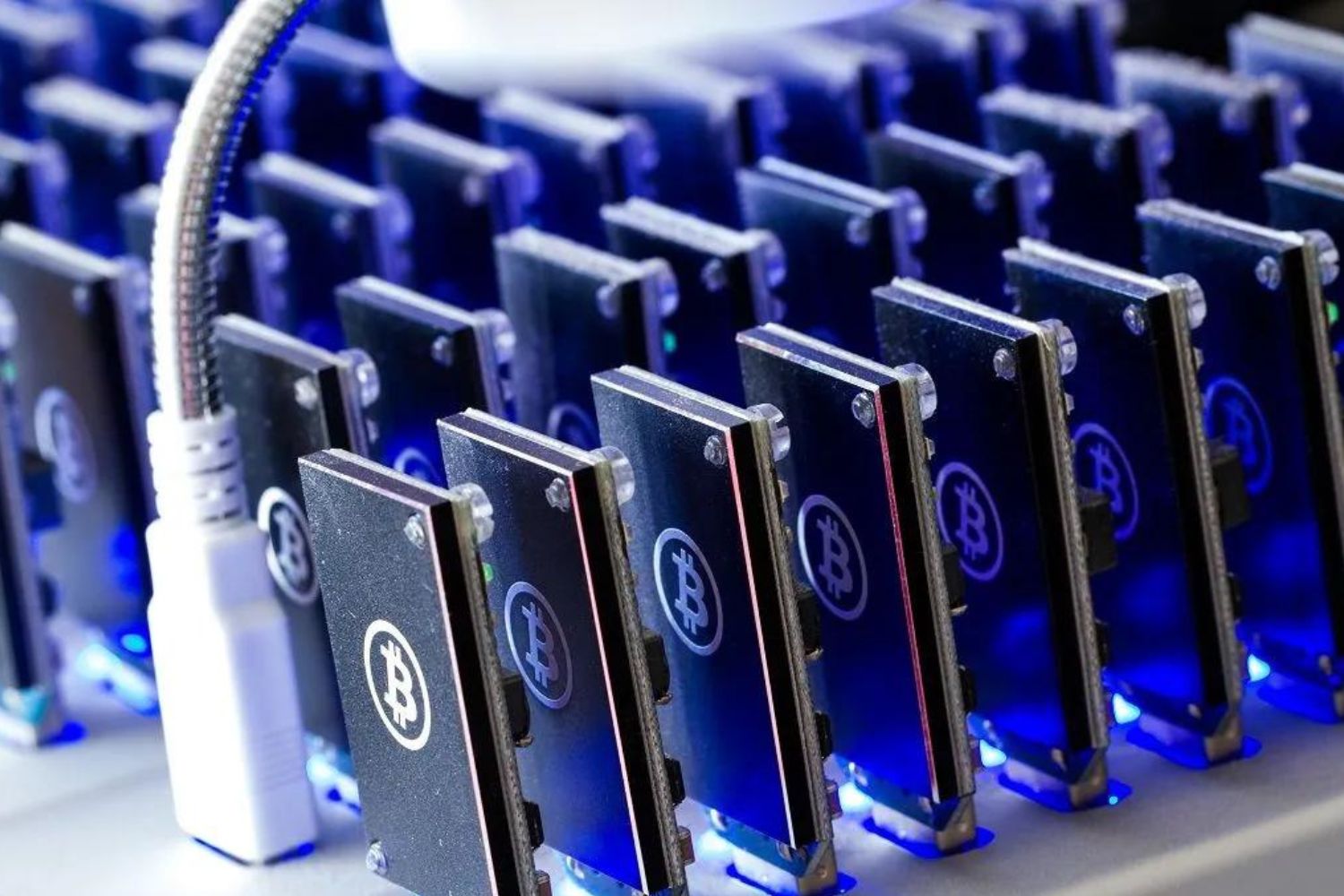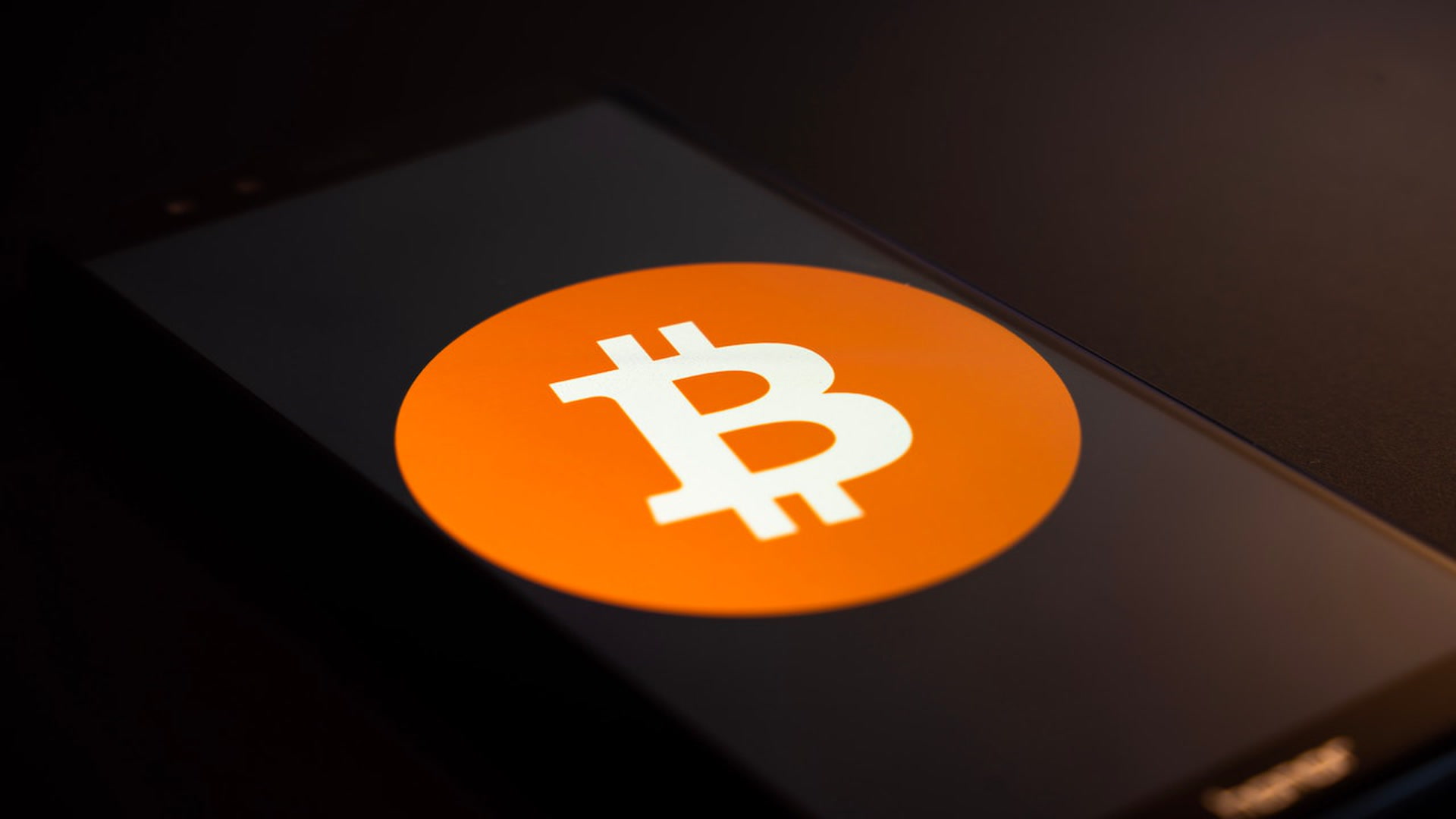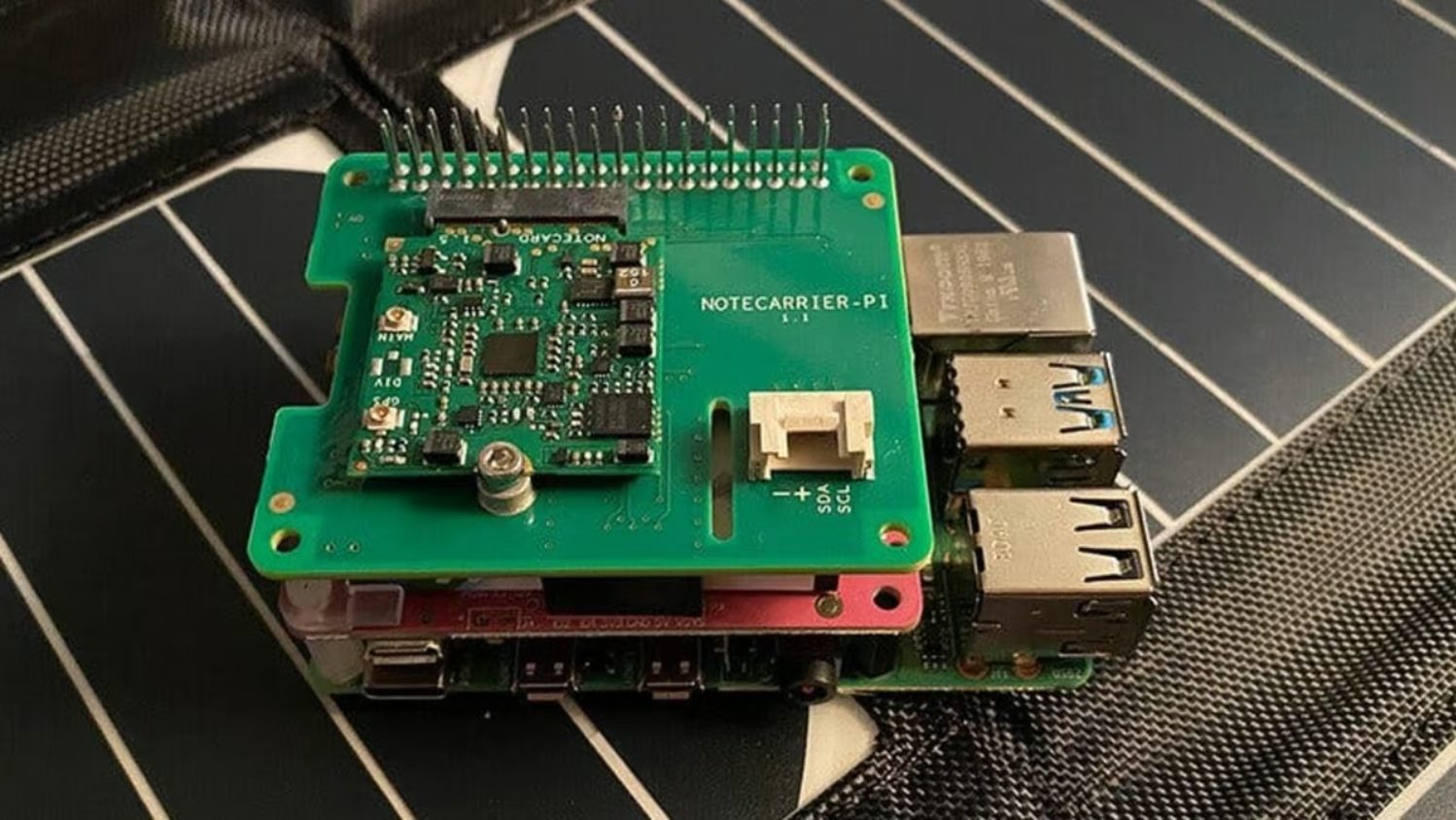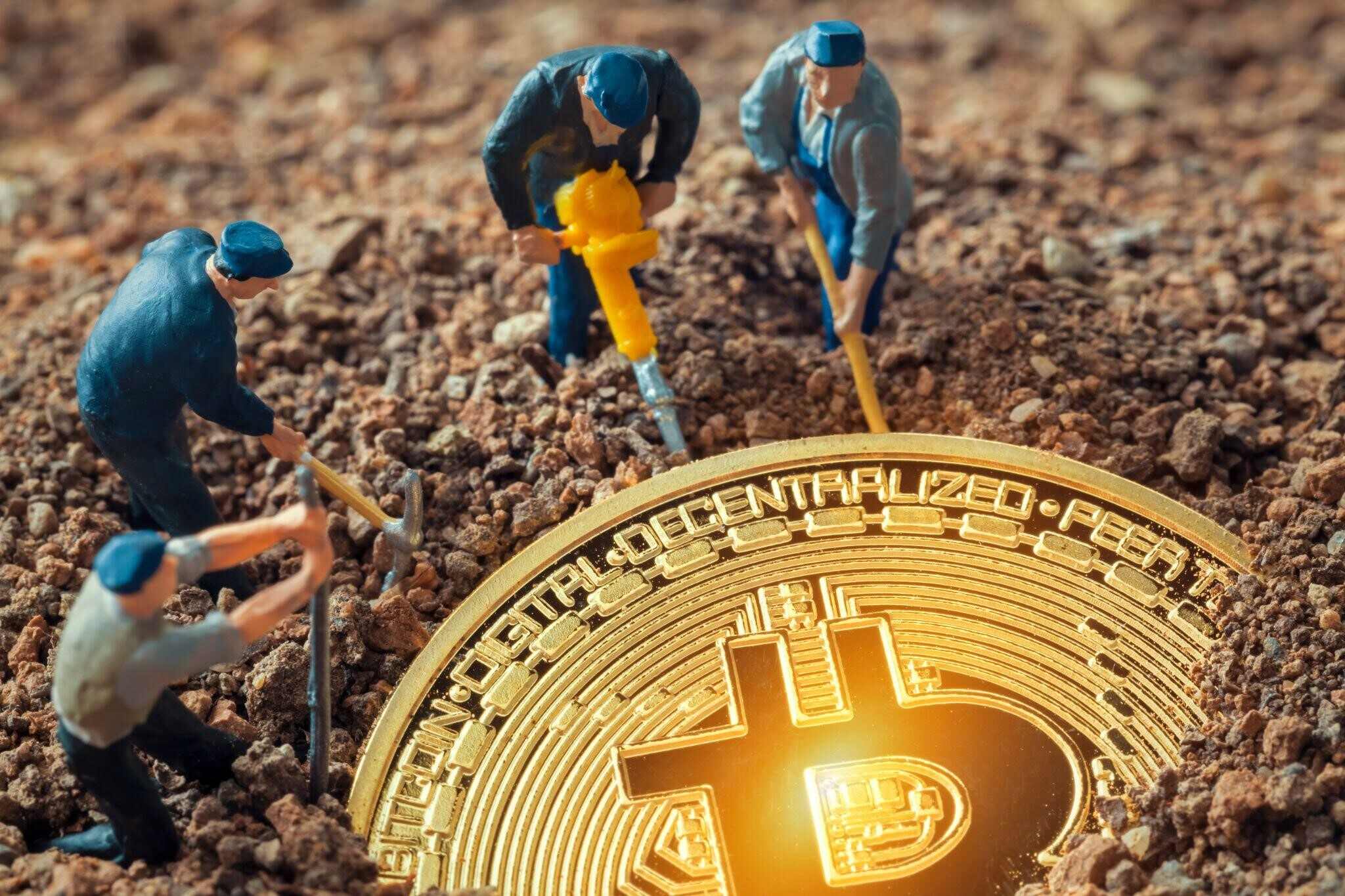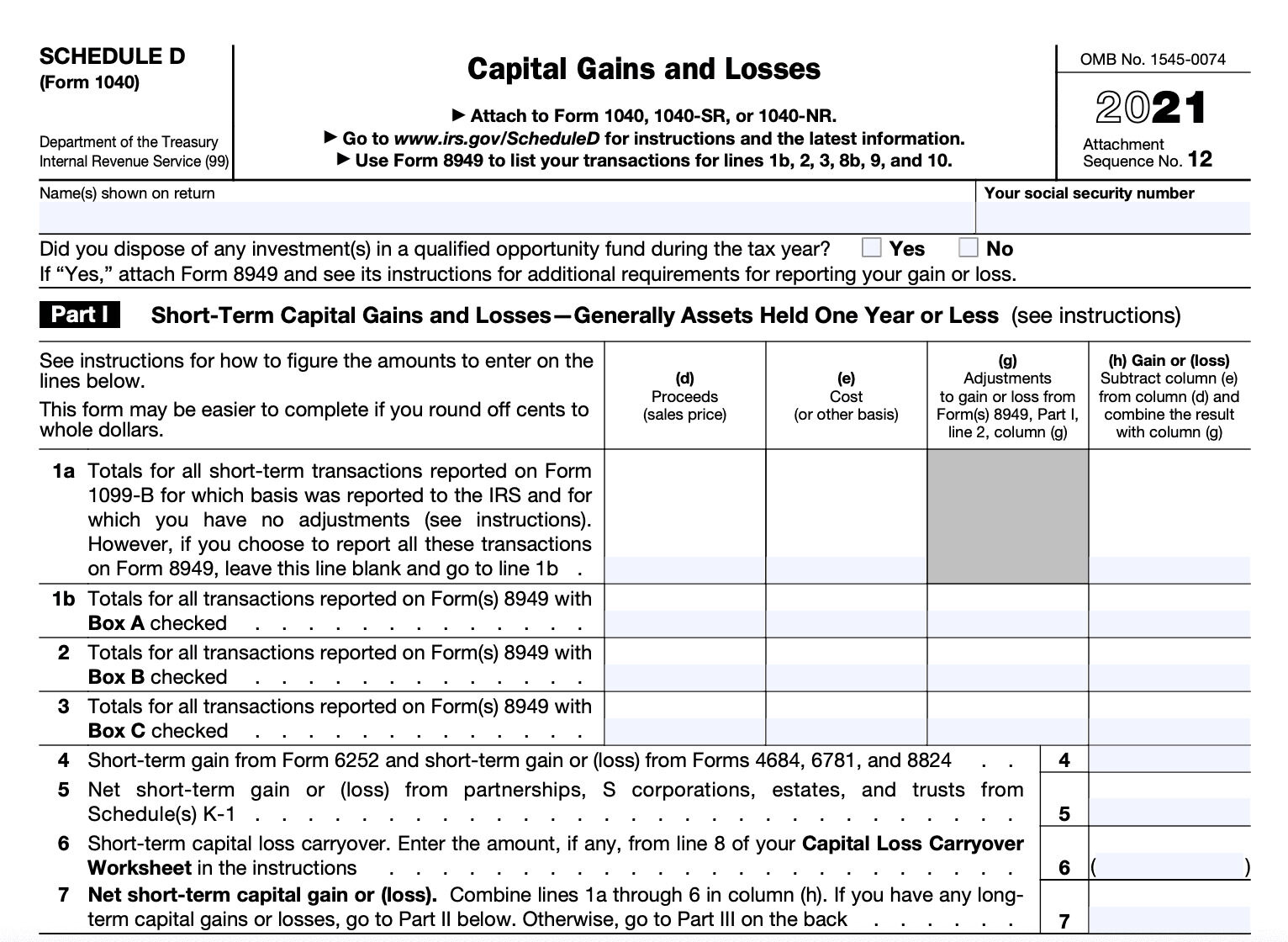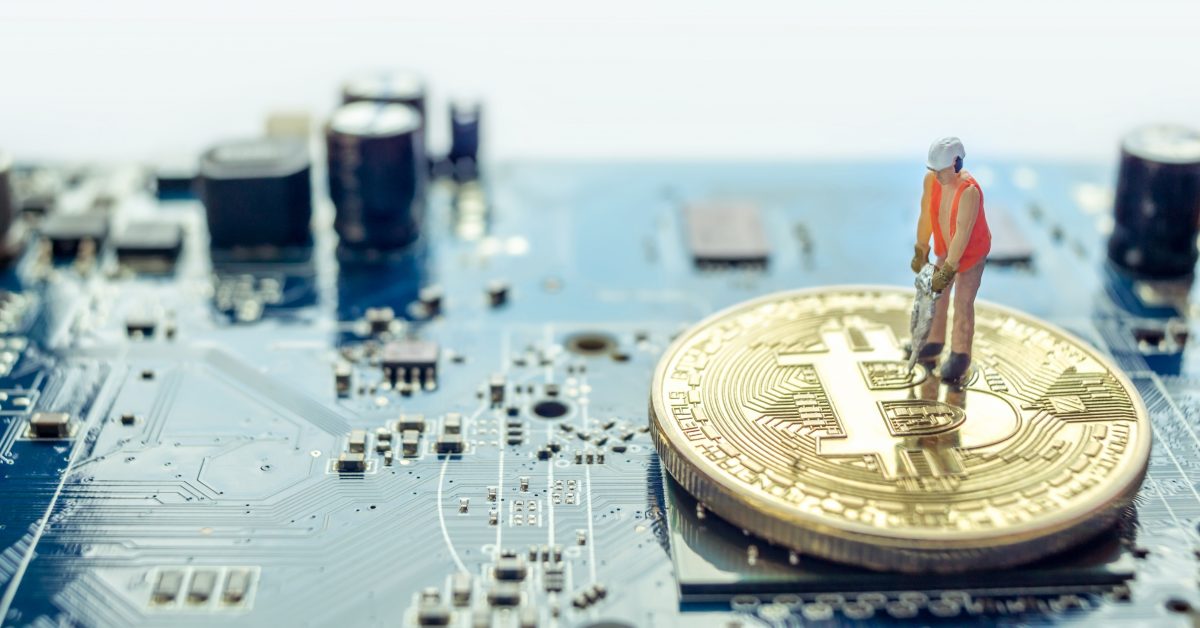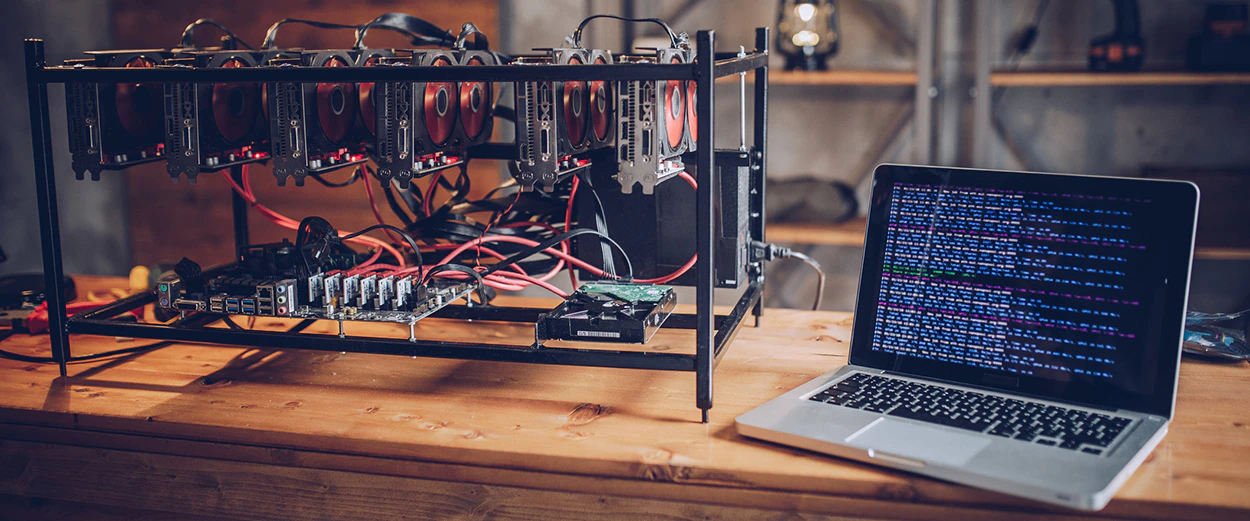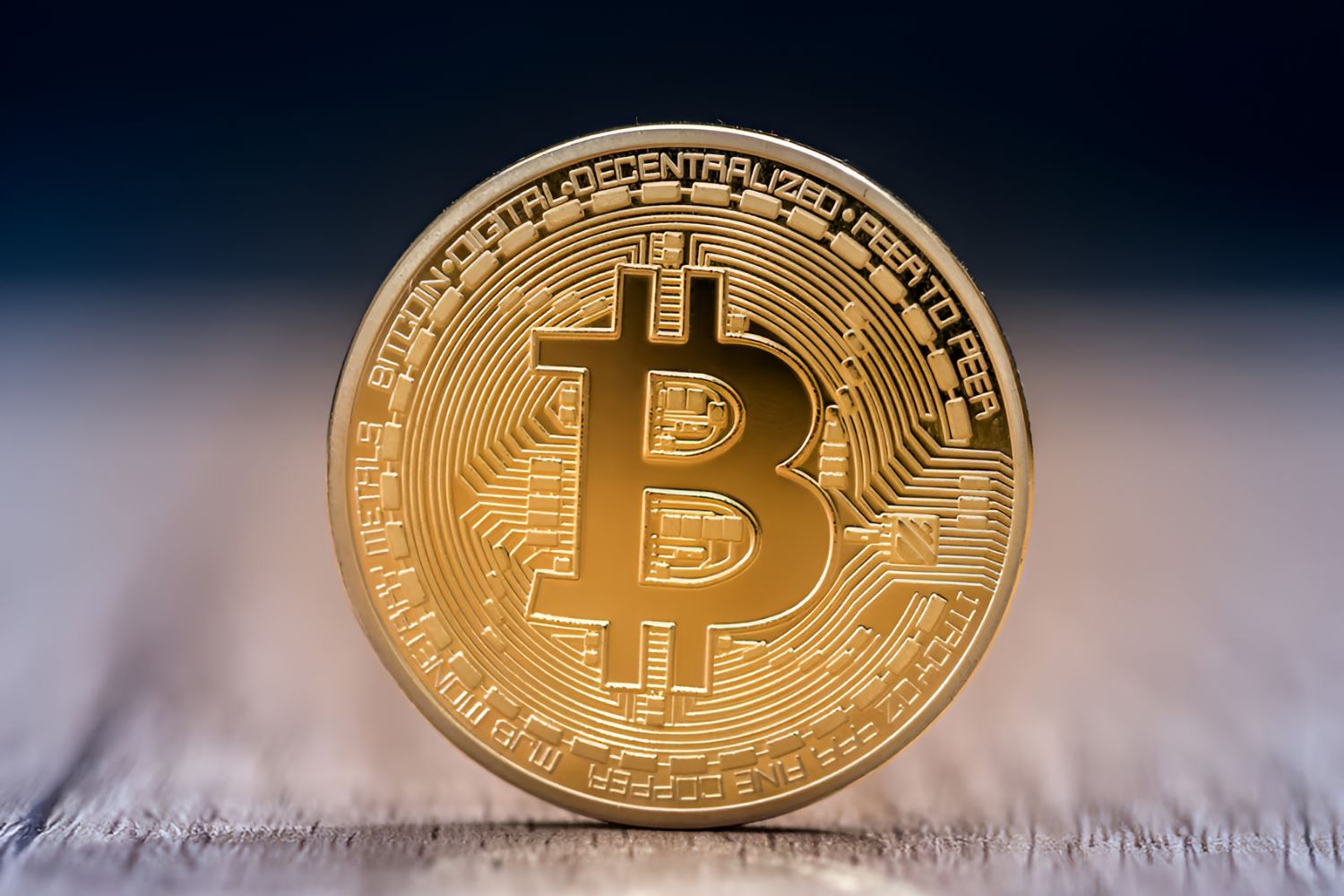Introduction
Welcome to the fascinating world of Bitcoin mining! In this digital era, Bitcoin has emerged as a revolutionary form of currency that operates independently of any central authority. As a decentralized cryptocurrency, Bitcoin relies on a technology called blockchain to record transactions securely and transparently.
Bitcoin mining plays a crucial role in maintaining the integrity and security of the Bitcoin network. It involves the process of validating and adding new transactions to the blockchain, while also minting new Bitcoins as a reward. However, Bitcoin mining is not as simple as it sounds; it requires specialized hardware, software, and technical knowledge.
If you’ve ever wondered how people mine Bitcoin and want to get started yourself, you’ve come to the right place. This comprehensive guide will walk you through the entire process, from understanding the basics of Bitcoin mining to optimizing your mining operation.
So, why would you want to mine Bitcoin? Besides the potential financial rewards, engaging in Bitcoin mining allows you to actively participate in the ecosystem and contribute to its security and decentralization. It can be an exciting endeavor for tech enthusiasts, investors, or individuals interested in the future of financial technology.
Throughout this guide, we will explore the various aspects of Bitcoin mining, including choosing the right hardware, setting up a wallet, joining a mining pool, installing mining software, understanding mining rewards and payouts, managing your mining operation, and addressing the risks and challenges involved.
Whether you’re a beginner seeking a basic understanding of Bitcoin mining or an experienced miner looking to refine your techniques, this guide will provide you with the knowledge and tools to embark on your mining journey. So, let’s dive in and discover how to mine Bitcoin!
What is Bitcoin Mining?
Bitcoin mining is the process by which new Bitcoins are created and transactions are verified and added to the blockchain. To fully grasp the concept of Bitcoin mining, it’s essential to understand the fundamentals of how the Bitcoin network functions.
At its core, Bitcoin operates on a decentralized peer-to-peer network, meaning there is no central authority governing its transactions. Instead, the network relies on a distributed ledger called the blockchain, which is maintained by a network of computers, known as miners.
Miners play a crucial role in the Bitcoin ecosystem. Their primary responsibility is to validate and verify transactions made by Bitcoin users. When someone sends Bitcoin to another person, the transaction is broadcast to the network and awaits confirmation from miners.
Bitcoin mining involves solving complex mathematical problems using computational power to validate transactions. These problems are designed to be challenging and resource-intensive, requiring significant computational effort. Miners compete to solve these problems, and the first one to find the solution and validate the transaction is rewarded with newly minted Bitcoins.
The process of mining involves bundling a group of pending transactions into a block. Miners then use their computational power to calculate a hash, a unique alphanumeric code, for the block. The goal is to find a hash that meets certain criteria set by the Bitcoin network, such as the difficulty level. This requires miners to make several attempts by changing the input data until they find a valid hash.
Once a miner finds a valid hash, they broadcast it to the network, along with the block of transactions. Other miners then verify the newly mined block to ensure its validity. If the majority of miners agree that the block is valid, it is added to the blockchain, and the miner who solved the problem is rewarded with a predetermined number of Bitcoins, as well as any transaction fees associated with the block.
It’s important to note that as more miners join the network, the difficulty level of mining increases. This is designed to regulate the rate at which new Bitcoins are created and prevents the network from being overwhelmed with new blocks too quickly.
In summary, Bitcoin mining is the process of validating and verifying transactions on the Bitcoin network by solving complex mathematical problems. It is through this mining process that new Bitcoins are created and added to circulation, while also ensuring the integrity and security of the blockchain.
How Does Bitcoin Mining Work?
Bitcoin mining is a complex process that involves various components working together seamlessly. To understand how Bitcoin mining works, let’s explore the key aspects of the process:
1. Distributed Network: The Bitcoin network consists of thousands of computers spread across the globe, known as nodes. These nodes work together to maintain the blockchain by storing a copy of the entire transaction history.
2. Mining Hardware: Bitcoin mining requires specialized hardware known as ASICs (Application-Specific Integrated Circuits). These powerful machines are designed specifically for mining cryptocurrencies and are far more efficient than traditional computer processors (CPUs) or graphics cards (GPUs).
3. Mining Pools: Due to the highly competitive nature of Bitcoin mining, many miners join together in mining pools. Mining pools combine the computational power of multiple miners, increasing the chances of successfully mining a block and receiving rewards. When a pool successfully mines a block, the rewards are distributed among the participating miners based on their contribution.
4. Mining Software: To connect their hardware to the Bitcoin network, miners use specialized mining software. This software allows miners to communicate with the network, receive and verify new transactions, and participate in the mining process.
5. Blockchain Consensus: The blockchain operates on a consensus mechanism known as Proof of Work (PoW). Miners compete to solve mathematical puzzles using their computing power. Once a miner finds a solution, they broadcast it to the network, and other nodes verify the validity of the solution. Consensus is reached when the majority of the network agrees that the solution is correct, and the block is added to the blockchain.
6. Block Rewards: Miners are rewarded for their efforts with newly minted Bitcoins. Currently, the block reward is set at 6.25 Bitcoins per block, but this amount is halved approximately every four years in an event known as the Bitcoin halving. Additionally, miners may also earn transaction fees associated with the transactions included in the block they mine.
7. Difficulty Adjustment: To ensure that new blocks are added to the blockchain approximately every ten minutes, the Bitcoin network adjusts the mining difficulty. This difficulty adjustment is based on the total computational power of the network. If more miners join the network, the difficulty increases. Conversely, if miners leave the network, the difficulty decreases.
In summary, Bitcoin mining is a decentralized process that involves specialized hardware, mining pools, software, and the consensus of the network. Miners compete to solve complex mathematical problems, validate transactions, and add new blocks to the blockchain, while also earning rewards in the form of newly minted Bitcoins.
Choosing the Right Mining Hardware
When it comes to Bitcoin mining, choosing the right hardware is a crucial first step. The mining hardware you select will determine the efficiency, profitability, and longevity of your mining operation. Here are some factors to consider when choosing the right mining hardware:
1. Hashrate: The hashrate represents the computational power of a mining device. It determines how quickly the hardware can solve the mathematical problems required to mine Bitcoins. Higher hashrate means more mining power and increased chances of mining a block. Compare the hashrate of different mining hardware options to find the most efficient one.
2. Energy Efficiency: Mining can consume a significant amount of electricity, so it’s important to consider the energy efficiency of the hardware you choose. Look for mining devices that provide a high hashrate while consuming less power. This will help reduce electricity costs and increase your profitability.
3. Cost: The cost of mining hardware is an important factor to consider, as it directly impacts your initial investment and potential returns. Keep in mind that mining equipment can be quite expensive, so it’s essential to calculate the return on investment (ROI) based on the hardware’s hashrate and energy consumption.
4. Reliability: Mining hardware operates continuously under high computational loads, so it’s crucial to choose reliable and durable devices. Look for reputable manufacturers and reviews from other miners to ensure that the hardware you select is capable of withstanding the demanding nature of Bitcoin mining.
5. Noise and Heat: Mining hardware generates a significant amount of noise and heat. Consider the noise level and cooling requirements of the hardware, especially if you plan to set up your mining operation at home. Opt for devices with efficient cooling systems or consider external cooling solutions to maintain optimal operating conditions.
6. Future Proofing: As the Bitcoin network evolves, the mining difficulty increases. It’s important to choose mining hardware that can adapt to these increasing difficulty levels over time. Consider the upgradeability options of the hardware to ensure its longevity and ability to remain profitable in the future.
7. Availability: Finally, consider the availability of mining hardware. High-demand hardware may experience shortages or extended delivery times, which could delay the setup of your mining operation. Stay informed about the availability and prices of different mining equipment options before making a purchase.
By carefully considering these factors, you can choose the right mining hardware that aligns with your budget, energy efficiency goals, and long-term mining objectives. Remember, investing in quality hardware from reputable manufacturers will help maximize your chances of success in the competitive world of Bitcoin mining.
Setting Up a Bitcoin Wallet
Before you start mining Bitcoin, it’s crucial to set up a Bitcoin wallet to securely store your mined Bitcoins. A Bitcoin wallet is a digital wallet that allows you to send, receive, and store your cryptocurrency.
Here are the steps to set up a Bitcoin wallet:
1. Choose a Wallet Type: There are different types of Bitcoin wallets available, including software wallets, hardware wallets, and online wallets. Software wallets are applications that you download and install on your computer or mobile device, while hardware wallets are physical devices that store your private keys offline. Online wallets, also known as web wallets, are hosted on a third-party website. Consider the security, convenience, and accessibility of each type to choose the one that suits your needs.
2. Download or Access the Wallet: If you opt for a software wallet, visit the official website of the wallet provider and download the software. Ensure that you download it from a trusted source. If you prefer a hardware wallet, purchase it from a reputable manufacturer. For online wallets, visit the website of the wallet provider and sign up for an account.
3. Create a New Wallet: Once you have the wallet software or account ready, you’ll need to create a new wallet. Follow the instructions provided by the wallet provider to generate a new wallet address, which will be used for receiving Bitcoins.
4. Secure Your Wallet: Bitcoin wallets are protected by private keys, which are essentially long strings of characters. Ensure that you keep your private keys secure and confidential. Write them down or store them in an encrypted format, and never share them with anyone. You may also set up additional security measures, such as two-factor authentication (2FA), to enhance the security of your wallet.
5. Backup Your Wallet: Backing up your wallet is crucial to protect your funds in case of hardware failure or loss of private keys. Most wallet providers offer an option to create a backup or recovery seed. Follow the instructions provided by the wallet provider to create a backup and store it securely offline.
6. Test Your Wallet: Before mining Bitcoins, it’s a good idea to test your wallet by sending a small amount of Bitcoin to your wallet address. This will ensure that your wallet is functioning correctly and that you can receive and access your funds.
7. Keep Your Wallet Updated: Wallet providers regularly release updates to enhance security and add new features. It’s important to keep your wallet software or firmware up-to-date to benefit from the latest improvements and safeguards.
By following these steps, you’ll be able to set up a Bitcoin wallet and ensure the security and accessibility of your mined Bitcoins. Remember to choose a wallet provider that aligns with your security preferences and stay vigilant to protect your private keys and funds from potential threats.
Joining a Mining Pool
When it comes to Bitcoin mining, joining a mining pool can significantly improve your chances of mining a block and earning rewards. Mining pools allow miners to combine their computational power and work together towards a common goal. Here’s what you need to know about joining a mining pool:
1. Understanding Mining Pools: A mining pool is a collective of miners who combine their resources to increase the probability of mining a block. When a pool successfully mines a block, the rewards are distributed among the participants based on their contribution to the pool’s computational power.
2. Increased Chances of Mining a Block: Mining as an individual with limited computational power may take a significant amount of time to mine a block and receive rewards. By joining a mining pool, you contribute to a larger pool of computational power, increasing the chances of collectively mining a block and earning regular payouts.
3. Choosing the Right Mining Pool: There are various mining pools available, each with its own fee structure, payout methods, and reputation. It’s essential to choose a reliable and reputable mining pool to ensure fair distribution of rewards and minimize downtime. Research and compare different mining pools before making a decision.
4. Registering with the Pool: To join a mining pool, you’ll need to register an account with the pool’s website. This typically involves providing a username, creating a unique password, and specifying your Bitcoin wallet address where you will receive your rewards.
5. Configuring Your Mining Software: Once registered, you’ll need to configure your mining software to connect to the mining pool. Each pool has its own mining software and configuration parameters. Follow the instructions provided by the pool to set up your mining software correctly.
6. Monitoring Your Mining Performance: After joining a mining pool, you can monitor your mining performance through the pool’s website or dedicated mining software. This allows you to track your hashrate, the number of shares contributed to the pool, and the rewards you’ve earned.
7. Pool Fees and Payouts: Mining pools typically charge a small fee for their services, which is deducted from the rewards earned. Additionally, each pool has its own payout threshold and payout schedule. Ensure that you are aware of the pool’s fee structure and payout policies before joining.
By joining a mining pool, you gain access to a larger pool of computational power, increasing your chances of mining a block and receiving regular payouts. However, it’s important to choose a reputable pool with fair practices and monitor your mining performance to ensure that you are receiving the rewards you deserve. Mining pools can be an excellent option for individuals seeking a more consistent and reliable Bitcoin mining experience.
Installing Mining Software
To start mining Bitcoin, you’ll need to install mining software on your mining hardware. Mining software allows your hardware to communicate with the Bitcoin network, perform the necessary calculations, and participate in the mining process. Here’s a step-by-step guide on installing mining software:
1. Choose the Right Software: There are various mining software options available, each with its own features, compatibility, and performance. Some popular mining software includes CGMiner, BFGMiner, EasyMiner, and BitMinter. Research and compare different software options to find the one that best suits your hardware and mining preferences.
2. Download the Software: Visit the official website of the mining software you’ve chosen and download the latest version. Ensure that you download it from a trusted source to minimize the risk of malware or other security issues.
3. Install the Software: Once downloaded, run the software installer and follow the on-screen instructions to install the mining software on your system. The installation process may vary depending on the software you’ve chosen and your operating system.
4. Configure the Software: After installing the software, you’ll need to configure it to connect to the Bitcoin network and your mining pool. Typically, you’ll need to provide your mining pool’s server address, your username, and password. Consult the software’s documentation or the pool’s instructions to properly configure the software.
5. Test the Configuration: After configuring the software, it’s a good idea to test the configuration to ensure that it’s working correctly. Run the software and check if it successfully connects to your mining pool, displays your hashrate, and starts mining.
6. Fine-tune the Settings: Mining software often provides various settings and options that allow you to optimize your mining performance. These settings can include adjusting the intensity, thread concurrency, or overclocking options. Experiment with different settings to find the optimal configuration for your hardware.
7. Monitor and Troubleshoot: Once the mining software is up and running, monitor its performance regularly. Keep an eye on your hashrate, temperature, and any error messages that may indicate issues with your mining hardware or software. Troubleshoot potential problems promptly to ensure smooth and efficient mining operation.
By following these steps, you can successfully install and configure mining software on your hardware, allowing you to join the Bitcoin network and start mining. Remember to keep your software up-to-date, stay informed about any updates or security patches released by the software provider, and regularly check for new versions of the mining software for improved performance and stability.
Configuring Mining Settings
Once you have installed the mining software, the next step is to configure the mining settings. Properly configuring the mining settings is crucial to optimize your mining performance and ensure the smooth operation of your mining hardware. Here are the key aspects to consider when configuring your mining settings:
1. Pool Configuration: Start by configuring the mining software to connect to your mining pool. Provide the pool’s server address, your username, and password as specified by the pool. This allows your hardware to communicate with the pool and contribute to the collective mining effort.
2. Hardware Configuration: Each mining hardware may have specific configuration options that can be adjusted in the mining software. These settings can include the fan speed, clock speed, voltage, and power limit. Consult the documentation or manufacturer’s guidelines to understand the optimal configuration for your specific hardware.
3. Intensity and Workload: Mining software often allows you to adjust the intensity or workload of your hardware. Higher intensity settings can increase the hashrate but may also increase power consumption and generate more heat. Experiment with different intensity levels to find the right balance that maximizes your mining efficiency while keeping your hardware operating within safe temperature limits.
4. Overclocking: Overclocking involves increasing the clock speed and voltage of your mining hardware to maximize its performance. However, overclocking can also increase power consumption and generate more heat. Carefully monitor your hardware’s temperature and stability when overclocking to prevent damage or instability.
5. Monitoring: Regularly monitor your mining software to ensure it is running smoothly and your hardware is functioning as expected. Keep an eye on vital statistics such as hashrate, temperature, and fan speed. Monitoring tools and software can help you track the performance of your mining operation and detect any issues promptly.
6. Power Management: Mining can be energy-intensive, so consider implementing power management strategies to reduce electricity consumption. This can include adjusting power settings on your hardware, such as enabling power-saving modes or reducing the power limit. Lowering power consumption can increase your mining profitability and reduce environmental impact.
7. Network Security: Configure your firewall and network settings to ensure the security of your mining operation. Enable any necessary port forwarding or firewall rules to allow your mining software to communicate with the mining pool. Additionally, consider using a Virtual Private Network (VPN) for enhanced security when connecting to mining pools.
Properly configuring your mining settings is essential to maximize the efficiency and profitability of your mining operation. Experiment with different settings, monitor your hardware’s performance, and make adjustments as necessary to optimize your mining operation over time. Stay vigilant and keep up with the latest developments in mining software and hardware to adapt and improve your configuration for better mining results.
Start Mining Bitcoin
Once you have set up your mining hardware, installed the mining software, and configured the mining settings, you are ready to start mining Bitcoin. Here’s a step-by-step guide on how to begin your mining operation:
1. Ensure Hardware Connectivity: Ensure that your mining hardware is properly connected to your computer or mining rig. Check cables, power connections, and any necessary adapters to ensure a secure and stable connection.
2. Launch the Mining Software: Open the mining software you installed on your computer. Double-check that the software is running and connected to the Bitcoin network and your mining pool.
3. Monitor Hardware Metrics: Keep an eye on key hardware metrics displayed by the mining software, such as temperature, fan speed, and hashrate. Monitoring these metrics will help you identify any potential issues with your mining hardware and ensure optimal performance.
4. Watch for Shares and Rewards: As your mining hardware works on solving computational algorithms, it will generate shares that contribute to the mining pool’s efforts. Monitor the mining software’s dashboard or the pool’s website to see how many shares your hardware is contributing and keep track of any rewards you earn.
5. Be Patient: Mining Bitcoin is not an instantaneous process. It requires time and patience to mine a block, especially as the mining difficulty increases. It may take some time before you see significant rewards, so be prepared to let your mining operation run continuously for extended periods.
6. Regular Monitoring and Maintenance: Regularly monitor the performance of your mining operation. Check for any hardware issues, software updates, or changes in mining difficulty. Perform routine maintenance tasks such as cleaning dust from fans and ensuring proper airflow to maximize your hardware’s lifespan and efficiency.
7. Adjust and Optimize: As you gain experience in mining Bitcoin, you may discover opportunities to optimize your mining operation further. Experiment with different mining software, hardware configurations, or even different mining pools to find the combination that works best for you.
Starting a Bitcoin mining operation requires continuous monitoring, maintenance, and optimization to ensure optimal results. Remember that mining Bitcoin is a competitive endeavor, and success depends on factors such as mining hardware, software, mining pool, and market conditions. Stay informed, adapt to changes, and be committed to continuously improving your mining operation for better results.
Understanding Mining Rewards and Payouts
Mining rewards and payouts are an essential aspect of Bitcoin mining, as they determine the financial returns for miners. It’s crucial to understand how these rewards are structured and distributed. Here’s what you need to know:
1. Block Rewards: When a miner successfully mines a new block, they are rewarded with a certain amount of newly minted Bitcoins. The current block reward is set at 6.25 Bitcoins, but this amount is halved approximately every four years in an event known as the Bitcoin halving. This reduction in block rewards is designed to control the supply of new Bitcoins and maintain scarcity.
2. Transaction Fees: Miners also earn transaction fees associated with the transactions included in the block they mine. Bitcoin users pay transaction fees voluntarily to prioritize their transactions and incentivize miners to include them in a block. Transaction fees can vary depending on factors such as transaction size, network congestion, and user preferences.
3. Mining Pool Rewards: When mining as part of a mining pool, the rewards are distributed among all the participants based on their contribution to the pool’s computational power. Each mining pool has its own reward distribution system, which can be based on various methods, such as Pay Per Share (PPS), Proportional, or Pay Per Last N Shares (PPLNS).
4. Payouts and Thresholds: Mining pools typically have certain payout thresholds that need to be reached before a miner can receive their earnings. The payout threshold is usually set in terms of the total mining reward accumulated by the miner. Once the threshold is met, the pool automatically sends the payouts to the miner’s specified Bitcoin wallet address.
5. Potential Revenue and Profitability: Calculating the potential revenue and profitability of mining depends on factors such as the mining hardware’s hashrate, energy consumption, mining difficulty, and Bitcoin’s market price. There are online mining profitability calculators available that can help estimate potential earnings based on these variables.
6. Market Volatility: It’s important to consider the volatility of the Bitcoin market. The value of Bitcoin can fluctuate significantly, affecting the profitability of mining. Price increases can lead to higher mining returns, while price decreases can impact profitability. Keep an eye on market trends and assess the risk associated with mining operations.
7. Tax Obligations: Mining rewards are typically subject to taxation in many jurisdictions. It’s essential to understand and comply with the tax laws and regulations in your country regarding cryptocurrency mining and earnings. Consult with a tax professional to ensure proper compliance and reporting.
Understanding mining rewards and payouts is crucial for miners to assess the potential profitability of their mining operations and manage their expectations. It’s important to stay informed about block reward halvings, transaction fee dynamics, market trends, and taxation regulations to make informed decisions regarding mining participation.
Monitoring and Managing Your Mining Operation
Monitoring and managing your mining operation is essential to maintain optimal performance, maximize profitability, and ensure the smooth operation of your mining hardware. Here are key aspects to consider when monitoring and managing your mining operation:
1. Hardware Monitoring: Regularly monitor your mining hardware to ensure it is functioning properly. Keep an eye on key metrics such as temperature, fan speed, and hashrate. Use monitoring software or dedicated hardware monitoring tools to detect any hardware issues or abnormalities.
2. Performance Optimization: Continuously optimize your mining operation to improve efficiency and profitability. Experiment with different mining software, hardware configurations, or mining pool options. Adjust settings such as intensity, overclocking, or power limit to maximize hashrate and minimize power consumption.
3. Network and Internet Connectivity: Ensure stable network and internet connectivity for your mining operation. Unstable connections may result in high reject rates and disruption of your mining activities. Consider using a backup internet connection or network redundancy options for added reliability.
4. Power and Energy Efficiency: Monitor your power consumption and explore ways to increase energy efficiency. Implement power-saving strategies such as adjusting power settings, optimizing cooling systems, or exploring renewable energy options. Lowering energy costs can significantly impact the profitability of your mining operation.
5. Pool Performance and Payouts: Regularly review your mining pool’s performance, including metrics like hashrate, block discovery rate, and payout record. Assess the pool’s stability, reliability, and transparency. Consider switching to a different pool if you encounter persistent issues or if you find a more suitable option.
6. Security and Protection: Implement robust security measures to safeguard your mining operation. Use strong and unique passwords for your mining software and pool accounts. Enable two-factor authentication (2FA) for added security. Keep your mining software and hardware firmware up-to-date to protect against potential vulnerabilities.
7. Regular Maintenance: Perform routine maintenance tasks on your mining hardware, such as cleaning dust from fans, checking for loose connections, and updating firmware. Regular maintenance ensures optimal performance and longevity of your mining equipment.
8. Stay Informed: Stay up-to-date with the latest news, developments, and trends in the world of Bitcoin mining. Join mining communities, forums, and social media groups to learn from other miners’ experiences and stay informed about mining industry changes.
Effective monitoring and management of your mining operation are crucial for long-term success. By actively monitoring performance, optimizing efficiency, ensuring reliable connectivity, and maintaining robust security measures, you can maximize the profitability of your mining operation and navigate the dynamic landscape of Bitcoin mining successfully.
Optimizing Mining Efficiency
To maximize the efficiency and profitability of your Bitcoin mining operation, it’s important to optimize various aspects of your setup. Here are some key strategies to consider for optimizing mining efficiency:
1. Hardware Selection: Choose mining hardware with high hash power and energy efficiency. Research and compare different models to find the best hardware that offers a good balance between performance and power consumption. Upgrading to more advanced mining equipment can significantly improve efficiency.
2. Cooling and Temperature Management: Proper cooling is crucial for maintaining the efficiency and longevity of your mining hardware. Ensure adequate airflow, consider using cooling fans or liquid cooling solutions, and monitor the temperature regularly. High operating temperatures can impact performance and increase hardware failure rates.
3. Power Management: Optimize power consumption to reduce energy costs and improve efficiency. Adjust power settings, use energy-efficient power supplies, and consider renewable energy sources or time-of-use electricity pricing to take advantage of lower rates during off-peak hours.
4. Mining Software Optimization: Explore different mining software options and optimize their settings to maximize performance. Fine-tune configuration parameters such as intensity, worksize, or thread concurrency to find the optimal balance between hash rate and stability for your hardware.
5. Pool Selection and Configuration: Choose a mining pool that provides a stable connection and offers low fees. Consider the pool’s size, fees, payout scheme, and reputation. Experiment with different pools to find the one that best suits your mining objectives and provides optimal efficiency.
6. Regular Maintenance: Perform routine maintenance tasks to ensure hardware efficiency. Clean dust and debris from fans, inspect wiring for any damage or loose connections, and update firmware regularly. Proper maintenance extends the life of your hardware and helps maintain optimal performance.
7. Network Optimization: Ensure a stable and reliable internet connection with low latency. Use a wired connection instead of Wi-Fi for better stability. Optimize your network configuration to minimize packet loss and reduce the potential for mining interruptions or high reject rates.
8. Monitor and Analyze Performance: Regularly monitor the performance of your mining operation. Analyze metrics such as hashrate, power consumption, and rejected shares. Use performance monitoring tools or software to identify bottlenecks, fine-tune settings, and make data-driven decisions to optimize efficiency.
By implementing these optimization strategies, you can improve the efficiency of your Bitcoin mining operation, increase profitability, and potentially extend the lifespan of your mining hardware. Continually evaluate and adjust your setup as technology evolves and mining conditions change to stay competitive in the dynamic world of Bitcoin mining.
Risks and Challenges in Bitcoin Mining
While Bitcoin mining can be rewarding, it’s important to be aware of the risks and challenges involved. Here are some key factors to consider:
1. Market Volatility: The price of Bitcoin is highly volatile, and it can dramatically impact mining profitability. A sharp decline in Bitcoin’s value can make mining less profitable or even unprofitable. Miners need to carefully monitor market trends and assess the associated risk.
2. Mining Difficulty: As more miners join the network, the mining difficulty increases. This makes it harder to mine new blocks and earn rewards. Miners need to continuously upgrade their hardware and seek cost-effective solutions to stay competitive in an increasingly difficult mining environment.
3. Electricity Costs: Bitcoin mining requires a significant amount of electricity, and electricity costs can greatly impact profitability. Miners operating in regions with high electricity costs may struggle to generate sufficient profits. Exploring energy-efficient hardware and alternative energy sources can help mitigate this risk.
4. Hardware Depreciation: Mining hardware depreciates over time, and advancements in technology can quickly render older hardware obsolete. Miners need to factor in the costs of upgrading or replacing their hardware periodically to maintain optimal mining efficiency.
5. Regulatory and Legal Uncertainty: The regulatory landscape surrounding cryptocurrencies is constantly evolving. Changes in regulations or government policies can impact mining operations, potentially leading to increased costs, compliance requirements, or even bans in certain jurisdictions.
6. Security Risks: The security of your mining operation is crucial. Miners need to protect their mining hardware, wallets, and data from hacking attempts, malware, and other cyber threats. Implementing robust security measures, such as strong passwords, two-factor authentication, and regular software updates, is essential.
7. Network and Connectivity Issues: Mining operations rely on stable internet connections. Network disruptions, power outages, or changes in internet service provider (ISP) availability can interrupt mining operations and result in lost mining time and potential earnings.
8. Environmental Impact: Bitcoin mining consumes a considerable amount of energy, potentially contributing to negative environmental impact. Miners need to be conscious of their energy consumption and explore sustainable energy sources as a way to mitigate their environmental footprint.
Understanding and managing these risks and challenges is crucial for miners. Conduct thorough research, stay informed with industry news, and adapt your mining strategy accordingly. Flexibility, resilience, and a forward-looking approach are necessary to navigate the dynamic landscape of Bitcoin mining successfully.
Conclusion
Bitcoin mining is an exciting and potentially rewarding venture that requires careful planning, technical knowledge, and ongoing optimization. Throughout this guide, we have explored the key aspects of Bitcoin mining, from understanding the basics to optimizing efficiency and managing risks.
We started by understanding the concept of Bitcoin mining as the process of validating transactions and adding them to the blockchain. We then discussed the importance of choosing the right mining hardware, setting up a Bitcoin wallet, and joining a mining pool to improve your chances of mining a block and earning rewards.
Installing and configuring mining software is a critical step that allows your hardware to communicate with the Bitcoin network and participate in the mining process. Monitoring and managing your mining operation ensures optimal performance, efficiency, and profitability. Regular maintenance, hardware optimization, and network stability contribute to a successful mining operation.
We also delved into the risks and challenges associated with Bitcoin mining, including market volatility, mining difficulty, electricity costs, regulatory uncertainty, security risks, and network disruptions. Being aware of these challenges and taking proactive steps to mitigate them is crucial for long-term success.
As the Bitcoin network evolves, so does the landscape of mining. It’s important to stay informed, adapt to changes, and continue learning about new technologies and strategies to remain competitive and profitable.
Remember, Bitcoin mining is not a get-rich-quick scheme. It requires dedication, ongoing research, and constant optimization. However, with the right hardware, software, and knowledge, Bitcoin mining can be a fascinating and potentially lucrative endeavor.
Now that you have a comprehensive understanding of Bitcoin mining, it’s time to take your first steps into this exciting world. Stay committed, stay informed, and embrace the challenges and opportunities that come your way as a Bitcoin miner.







